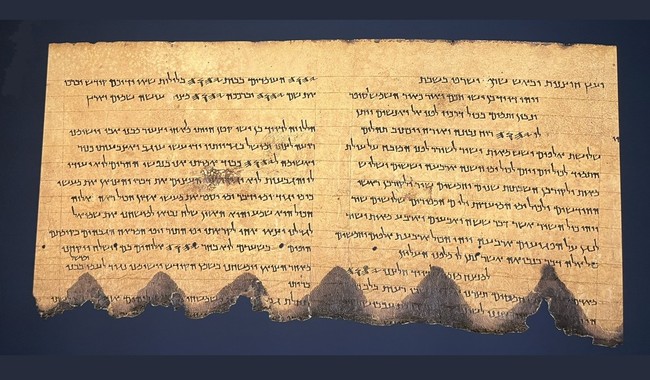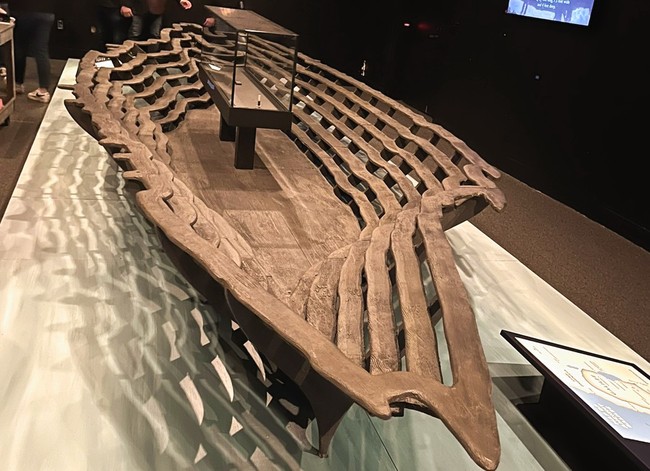Not so long ago, I took my family (and myself) to see the U.S. Constitution in Washington, D.C. It’s an incredible document to view, and as you stare at it, you can’t help but be moved by the fact that its words have guided the nation for over 200 years. (Although 500 copies of the founding document were printed back in the day, only 11 to 15, depending on who you ask, still exist in modern times.)
Advertisement
But as profound as that was, what about watching the unveiling of writings that are two thousand years old?
I was lucky enough to witness that Friday at the Ronald Reagan Presidential Library in Simi Valley, California, as they get set to open “The Dead Sea Scrolls: The Exhibition” on November 22. Officials from the Israel Antiquities Authority dramatically unveiled some of the scrolls as well as some ancient wood from the “Jesus Boat” as they worked on assembling the installation.
But before we get into that, let’s delve into what the Dead Sea Scrolls actually are:
In 1947, a Bedouin shepherd stumbled upon a remarkable discovery in the Judaean Desert – the first of the Dead Sea Scrolls. Over the next decade, this chance finding would lead to the unearthing of thousands of manuscript fragments from 11 caves near the ancient site of Qumran, dating back two millennia.
These fragile parchments, preserved by the arid climate and darkness of the caves, represent an unparalleled treasure trove of ancient wisdom. They include the oldest known copies of the Hebrew Bible (Christian Old Testament) and an extraordinary library of previously unknown religious writings, offering unprecedented insights into the spiritual and cultural landscape of the Second Temple period (516 BCE – 70 CE).
Pretty extraordinary.
They unwrapped three iconic discoveries (photos are mine):
The Magdala Stone, which dates to the Second Temple Period, features intricate carvings of the Temple. These carvings provide insights into the role of synagogues as sacred spaces prior to the Temple’s destruction and showcase the earliest known synagogue images of the Temple Menorah.
Advertisement
The Sea of Galilee Boat, often referred to as the “Jesus Boat,” a 1st-century CE fishing boat discovered in 1986 along the northwest shore of the Sea of Galilee. Unearthed during a severe drought, the reconstruction measures 27 feet in length and 7.5 feet in width and includes wood from the original vessel.
The Psalm Scroll, the most substantial and well-preserved manuscript of Psalms of the thirty-six discovered in the Qumran caves. The Psalm Scroll is a rare find, as it contains several Psalms not found in the Hebrew Bible. These include two on display, focusing on the greatness of King David. The first focuses on his wisdom, attributing to him the writing of Psalms. The second, told in first person, describes the manner in which David was chosen and anointed as the monarch of Israel.

Advertisement
The Ronald Reagan Library is an experience that I highly recommend, as I’ve written before:
It’s frankly moving to see such history unveiled right before my eyes. Although they were still building the exhibit when I was there, I can already tell it’s going to be powerful.
Read related: There They Go Again: Dennis Quaid Says Facebook Censoring Marketing for Reagan Movie

